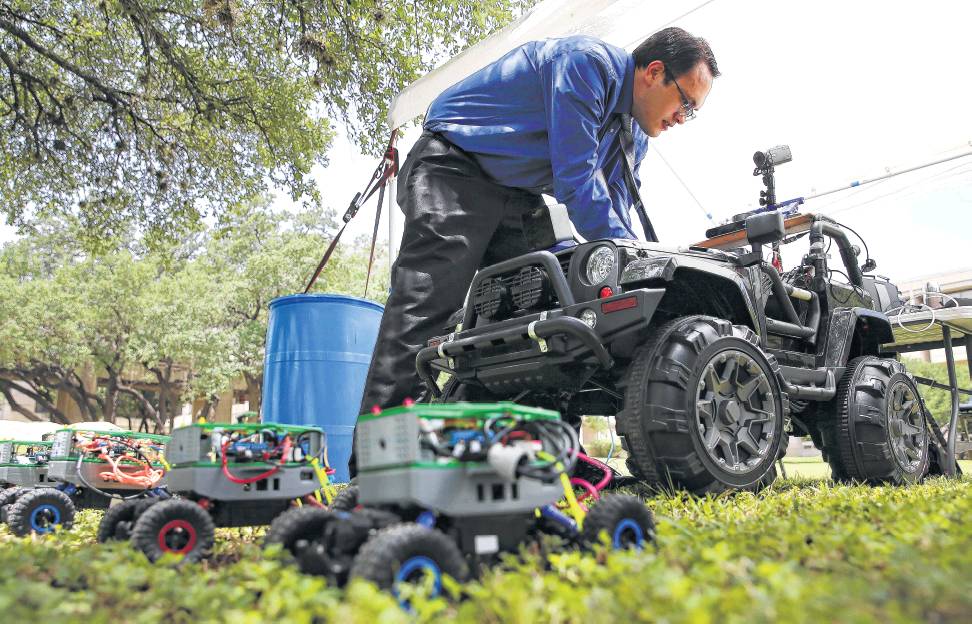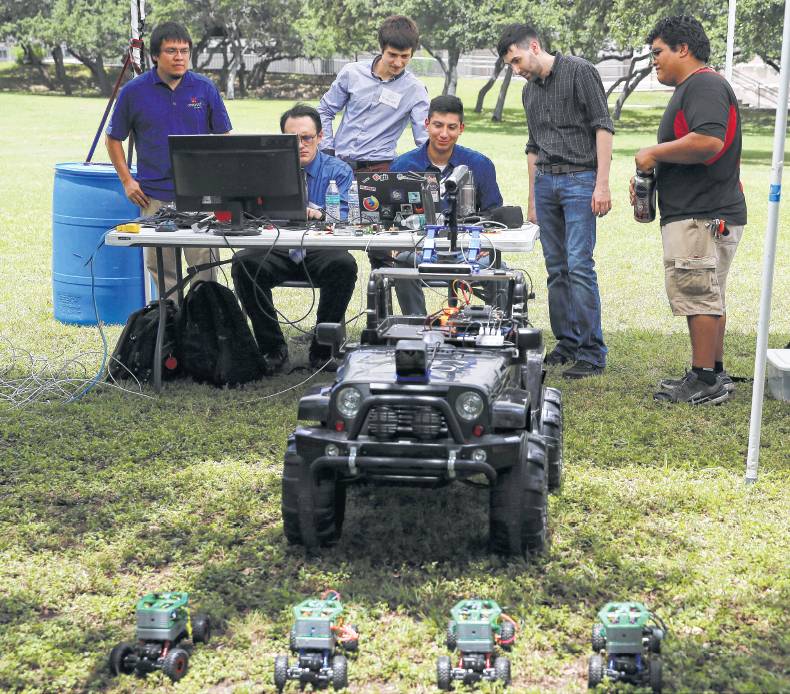RESEARCH
Self-driving, search-and-rescue rover is under study at UTSA
University teams up with North Carolina A&T to produce autonomous vehicles
By Megan Rodriguez STAFF WRITER
Drawing on five years of work, University of Texas at San Antonio researchers say they’re close to fielding a self-driving rover that can conduct search-and-rescue missions in treacherous terrain.
A drone determines potential paths, and the rover then releases several small vehicles to try to track down the missing person or object.
“We can detect what objects are there and make a map of where things are, which makes it easier for a vehicle,” said Patrick Benavidez, assistant director of UTSA’s Autonomous Control Engineering Laboratories.
In 2015, the Air Force Research Laboratory awarded a $5 million grant to UTSA and North Carolina Agricultural and Technical State University for the research.
The two universities have been working together on projects through their joint program — the Testing, Evaluation, and Control of Heterogeneous Large Scale systems of Autonomous Vehicles (TECHLAV) Center.
Researchers developed the rover with battlefield scenarios in mind.
“We saw some of the issues (military officials) were looking at and tried to come up with good decisions to help them mitigate the concerns that they have,” Benavidez said.
Abdollah Homaifar, director of TECHLAV Center, said the technology also can be used to eavesdrop or to send out ahead of troops to locate the enemy.
Benavidez said the rover prototype cost about $2,000 to make and was one of several projects his team worked on with the grant money. Researchers also studied cloud computing with the funds.
Last month, UTSA hosted the fourth TECHLAV meeting of the year. Researchers showcased the rover, but couldn’t make it perform an outdoor demonstration because of a power problem.
While the rover has been tested in the lab, Benavidez said the power converter will need to be improved for it to work in real-world situations.
Mo Jamshidi, a UTSA engineering professor, said some of the concepts the team has developed can be used to create robots to assist the elderly and smart walkers for the visually impaired. UTSA is working to commercialize the technology.
Benavidez said the grant might be extended for one more year. But if it’s not, the team plans to look for other funding to continue its research.
“This collaboration is very important in many ways,” said Homaifar, a North Carolina A&T professor. “For one, we are training the future leaders of STEM in autonomy-related technology. Autonomy is becoming part of our everyday life.” megan.rodriguez@ express- news.net


